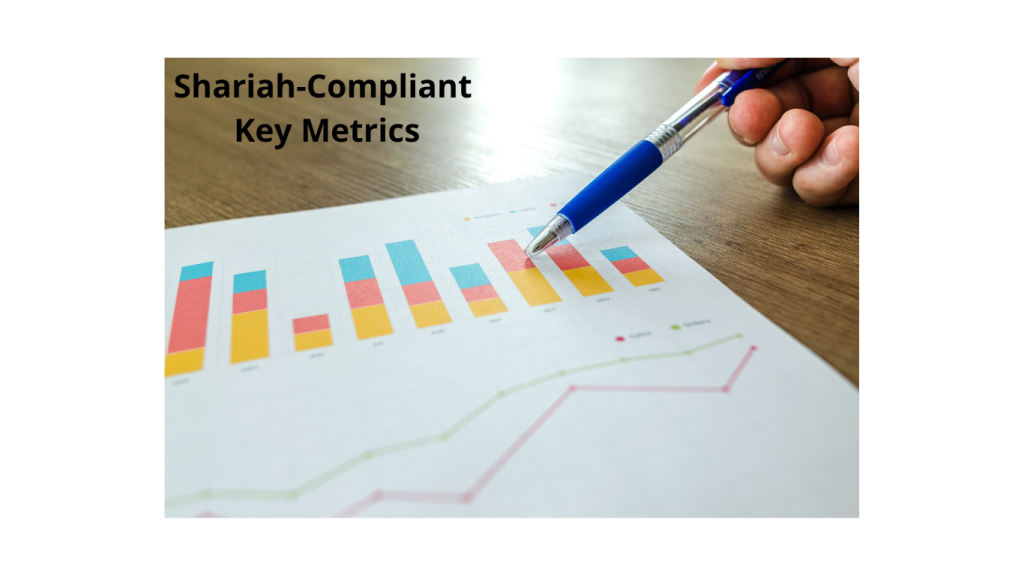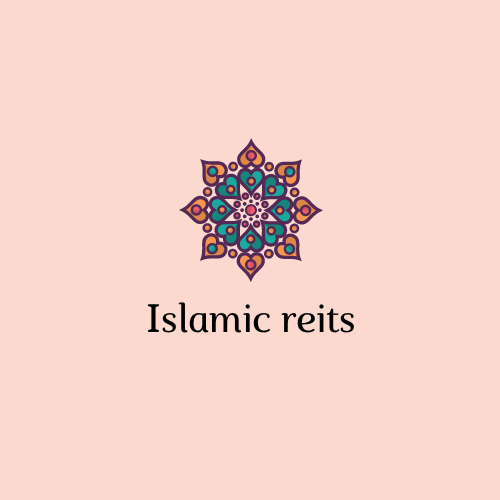
Shariah-compliant Real Estate Investment Trusts (REITs) are investment vehicles that enable individuals to invest in income-generating real estate assets in compliance with Islamic finance principles, without actually owning them.
Shariah-compliant REITs own and operate various real estate properties, such as commercial buildings, shopping centers, apartments, and hotels, while adhering to the Shariah principles of ethical and moral investing.
Investing in a Shariah-compliant REIT can provide exposure to real estate while offering liquidity, diversification, and potentially higher returns than traditional real estate investments.
However, not all Shariah-compliant REITs are created equal, and investors should evaluate various key metrics, including debt with Islamic financing, before investing.
In this context, this article will explore the 10 key metrics that investors should look for in a Shariah-compliant REIT to make informed investment decisions.
Ethical Investing Metrics
REIT’s Shariah Compliance
A Shariah committee ensures that the procedures and processes employed by the REIT’s manager and the provisions of the Trust Deed comply with Shariah principles.
The committee reviews the REIT’s documents to determine if the Manager operated the fund with applicable guidelines and principles. Specifically, the Shariah committee ensures that:
- The investment portfolio of the REIT does not comprise any non-Shariah-compliant rental from properties.
- The cash and liquid assets from rental income are invested in Shariah-compliant instruments.
- The fund does not use riba or any non-compliant financing to acquire its properties.
A Shariah-compliant REIT must disclose the Shariah committee’s review in its annual report and make it available to its shareholders.
REIT’s Sustainability Compliance
In addition to complying with Shariah principles, Shariah-compliant REITs also seek to fulfill ethical and sustainable targets. These targets include:
- Robust corporate governance through regulatory compliance, risk management, corporate governance, and business ethics.
- Strong social relationships through tenant satisfaction, health and safety, human rights and labor standards, diversity and inclusion, and climate change.
By focusing on these targets, Shariah-compliant REITs aim to promote sustainable and responsible investing practices while generating returns for investors. Investors who prioritize ethical and sustainable investing can consider these metrics when analyzing a Shariah-compliant REITs performance.
Property Management Metrics
After reviewing the ethical framework of the REIT, we can proceed to analyze the REIT’s property Occupancy Ratio, its Industry and Geographical Diversification.
Occupancy Ratio
Occupancy Ratio measures the percentage of leased space in a REIT’s properties over a specific period of time. This metric is critical for REITs as it directly impacts their rental income and cash flows.
A high occupancy ratio is preferred as it indicates that a REIT’s properties are in high demand and generating steady rental income. Conversely, a low occupancy ratio can be a cause for concern as it suggests that the REIT may be facing difficulties in attracting and retaining tenants.
REITs often report their occupancy ratios in their financial statements, which makes it easier for investors to track their performance over time.
Occupancy ratio can also be used to compare the performance of different REITs in the same sector or market.
Industry Diversification
REITs invest in a variety of property types, such as office buildings, residential complexes, healthcare facilities, retail spaces, industrial properties, and more. Some focus on one industry (like Al-’Aqar Healthcare REIT), while others invest in a variety of industries (like Sabana REIT).
Overall, by diversifying across different property sectors, REITs can spread their risk and potentially increase their returns.
This diversification also provides investors with a range of investment options and the ability to choose the sectors that align with their investment goals and risk tolerance. Overall, industry diversification is a key strategy employed by REITs to manage risk and optimize returns.
Geographical Diversification
Geographical diversification is a common strategy employed by real estate investment trusts (REITs) to mitigate risk and enhance their returns. By investing in properties located in different regions or countries, REITs can reduce their exposure to local market fluctuations and economic risks.
This diversification also enables them to benefit from favorable economic conditions and growth opportunities in various locations. Moreover, geographical diversification can attract a wider range of investors who seek exposure to diverse markets and want to diversify their portfolios.
Overall, geographical diversification is a key component of many REITs’ investment strategies, as it can help to balance risk and reward across different regions and increase their long-term resilience.
Profitability Metrics
To evaluate a REIT’s financial performance, several ratios should be considered, including net operating income (NOI), funds from operations (FFO), net asset value (NAV), gearing ratio, and debt coverage ratio (DCR).
Below is a brief description of each of these ratios:
Net Operating Income
Net Operating Income (NOI) is a commonly used metric when analyzing the financial performance of a REIT. It provides a good proxy for a REIT’s operating income and cash flows, as it measures the income generated from the REIT’s properties after subtracting operating expenses.
This metric enables investors to evaluate a REIT’s profitability before taking into account financing or taxes. An NOI greater than zero indicates that the rent collected from the properties is sufficient to cover the costs of owning and maintaining them, making it a preferred metric for investors.
Additionally, NOI is useful in calculating the Debt Service Coverage Ratio (DSCR), which helps investors assess the REIT’s ability to meet its debt obligations.
The formula for calculating NOI is as follows:
NOI = Gross Rental Income – Operating Expenses
Where Operating Expenses include:
- Managers’ fees
- Trustees’ fees
- Property taxes
- Insurance
- Maintenance
- Shariah advisor’s fee
Funds From Operations
Funds From Operations (FFO) is another key metric used to evaluate the financial performance of a Real Estate Investment Trust (REIT). It represents the cash generated from the REIT’s operations and is calculated by adding back depreciation and amortization to the REIT’s net income.
FFO is considered to be a more accurate measure of a REIT’s cash flows than traditional earnings measures because it accounts for the non-cash expenses of property ownership.
This metric is particularly important for REITs because they are required by law to distribute at least 90% of their taxable income to shareholders in the form of dividends.
Therefore, investors often use FFO as a gauge of a REIT’s ability to generate sufficient cash to sustain and grow its dividend payments.
Some REITs choose to make adjustments to their FFO calculation and refer to the resulting metric as Adjusted FFO or Core FFO.
Net Asset Value
When analyzing real estate investment trusts (REITs), one of the most effective methods is to use net asset value (NAV). Unlike other book value measures, such as price-to-book ratios, NAV takes into account the estimated market value of a REIT’s total assets (primarily real property) minus the value of all liabilities
Typically, an independent professional valuer who is not affiliated with the REIT conducts a valuation of the REIT’s properties and provides a fair value for them.
Some investors consider the net asset value per share, which is obtained by dividing NAV by the number of common shares outstanding, to be a helpful guideline for determining the appropriate share price.
Leverage Ratio
Gearing Ratio
Shariah-compliant REITs use Islamic financing methods, such as Murabaha and Ijara, to ensure that their investments comply with Islamic principles. However, even though they follow Shariah principles, these REITs can still be affected by changes in the broader economic landscape, such as a tightening monetary policy or rising interest rates.
These changes can impact the cost of financing for the REITs, potentially reducing their profitability and investment returns.
To manage their risk exposure, Shariah-compliant REITs often maintain a low gearing ratio, typically less than 0.5x, which indicates that they rely more on equity financing rather than debt financing. By doing so, these REITs can mitigate their financial risk and potentially reduce their exposure to interest rate fluctuations
To calculate Gearing Ratio, some REITs Total Debt to Total Equity, while other REITs prefer to use Total Borrowing to Total Asset Value of properties.
Liquidity Ratio
Debt Coverage Ratio
The Debt Coverage Ratio (DCR) is a financial metric used to measure a REIT’s ability to service its current debt obligations, typically within one year.
It is calculated by dividing the REIT’s net operating income (NOI) by its total debt service, including both principal and interest payments due in the next 12 months.
As a general rule, a DSCR exceeding 1.25 is often viewed as a positive indication that a company has sufficient cash flow to meet its debt obligations. Conversely, a ratio below 1.00 may imply that a company is experiencing financial difficulties and struggling to generate enough cash flow to service its debt.
Conclusion
Shariah-compliant Real Estate Investment Trusts differ from traditional REITs in that they must comply with Islamic Principles while offering investors the opportunity to invest in large-scale commercial projects.
To ensure compliance with these principles, Shariah-compliant REITs are overseen by a Shariah supervisory board who conducts regular audits.
However, like traditional REITs, Shariah-compliant REITs are often highly leveraged through the use of debt to fund their acquisitions and operations.
So in order to assess their financial sustainability and growth, there are some key metrics to evaluate such as Management, Profitability, Leverage and Liquidity.

